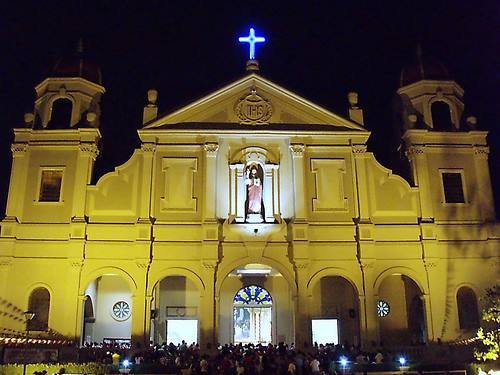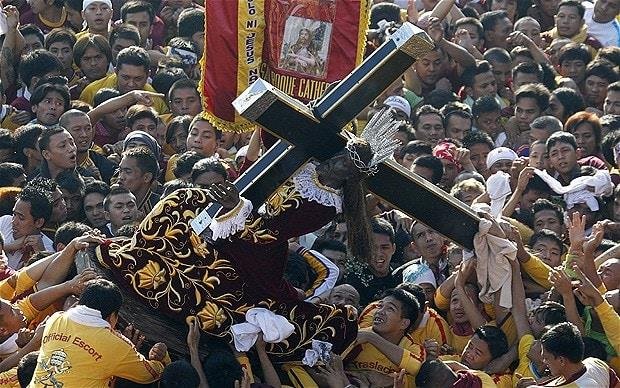The Creation of the Philippine Version of Catholicism
The Creation of the Philippine Version of Catholicism
The oppression against the Filipinos committed by the State and the Church during the Spanish colonization in the Philippines led to the creation of the Aglipayan Church after Father Gregorio Aglipay, a Filipino secular priest. The story was part of the struggle of the Filipino clergy in Filipinizing the Catholic church in the Philippines. This struggle led to the secularization to arise in the country, which was only preceded by the Filipinization movement led by Fathers Burgos, Gomez, and Zamora or the GomBurZa fathers (Holt, 2002).

Obviously, this attempt of liberation from the strict imposition of the Church that only the Spanish priests were allowed to hold higher positions in the Church was opposed by the Spanish friars.
Filipinization of the Church
The Filipinization of the church in the Philippines was part of the 1898 Revolution led by Andres Bonifacio. Since the Church was greatly dominated by Spanish priests, it was really natural that they would always side with the colonial government during the 1898 Revolution. The Filipino priests started to arm themselves. At first, Father Gregorio Aglipay was sympathetic to the Spaniards since he was a priest under the Catholic control of the Spain.
He persuaded the revolutionary leaders to ally with the Spaniards for the sake of battling against the Americans who were also about to invade the Philippines in the hands of the Spaniards. The Filipinos including the Filipino priests were a sort of a gamble between Spain and America. They were confused about which they would side with. They were to choose whether they would side the Spaniards or the revolutionary movement.
The enemy of the Spaniards was turned the Americans while the enemy of the Filipinos were the Spaniards. This threat pressured greatly the Spaniards, not to mention their losing force in their hometown when Spain was also under attack of neighboring enemy.
As a strategy, the Spaniards negotiated the Filipino priests to side with them. In return, they would grant the Filipino priests the rights to hold higher positions in the Church. As a result, Father Aglipay urged the Filipino revolutionaries to side with the Spaniards in beating the Americans.
However, he failed to win the movement. On the other hand, it was also the time when Aguinaldo, the first President of the Philippines, sent a letter to Aglipay, telling him to side with the Filipino cause instead. Later on, he joined the revolutionary forces when the revolutionaries passed the Spanish troops and managed to enter Manila and held control over it.

The National Church
The establishment of the Philippine National Church emerged as the product of the struggle of the Filipino priests. During the victory of the Filipino revolutionaries against the Spaniards, the Filipino priests were very happy that the revolutionaries were really for the Filipino cause and that they also included to their aspiration the liberation of the priests from the oppression of the Church. The national church was totally administered by Filipino priests. Its constitution did not allow the foreign religious people to occupy any seat in the Philippine church except during extreme difficulties.
Opposition to the National Church's Constitution
After the invasion of the Spaniards for 333 years of occupation to the Philippines, the Americans arrived and started to colonize the country. It was this time when Monsignor Placido Chapelle, an American Catholic leader, opposed the establishment of the national church. He told the Filipino priests that opposing the Catholic leadership of the Spanish priests meant the opposing of the Catholic church as a whole. He also added that it was the enemy of the religion to oppose the Spaniards' leadership.
So the monsignor planned to break it by force as an order of the Pope, he exclaimed (Bazaco, 1939). He also insisted that the Filipino priests were not capable and competent for the leadership that they must be replaced by the Spanish priests. The Filipino priests, moreover, were only qualified in the menial positions in the Church.
The Church's Separation from Rome
The plan was exactly for the separation of the Philippine churches from the control of the Pope in Rome. It was after the unwarranted frankness of monsignor Chapelle. The Filipinos especially the priests considered such rude speech dishonesty and discourtesy. The Filipino priests were greatly insulted for what happened. As a result, they continued the Filipinization of the Church in the Philippines.

This was organized by Isabelo de los Reyes, a Filipino scholar of Spain who was a patriot. He returned to the Philippines and founded the first labor union called Union Obrera Democratica, which means Democratic Labor Union (Grunder, 1951). Upon the establishment of the union, he suggested to build a church that would cut the ties with the leadership of the Pope. Following the movement was the establishment of Iglesia Filipina Independiente (Philippine Independent Church). He chose Father Gregorio Aglipay to lead the new church. With the founding of the said new church, the cutting of the ties with Rome was complete.
The Aglipayan Church or the Iglesia Filipina Independiente was, indeed, a product of the 1898 Revolution. It was a manifestation of the nationalism possessed by the Filipino revolutionaries. They did not only fight for political and economic independence but also for religious emancipation. The establishment of the new church was a reaction of the atrocities and discrimination of the Spanish priests towards the Filipino priests. Just as like the 1898 Revolution was a result of the longtime oppression and slavery of the Spanish regime for 333 years in the Philippines.
The founding of the new church actualized a centuries-old goal of radically determined Filipinism.
Reference:
Alger, R.A. The Spanish-American War. New York: Kessinger Publishing, 1901.
Almario, Virgilio S., ed. Pacto de Sangre: Spanish Legacy in the Philippines. Manila: National Historical Institute, 2003.
Bazaco, Evergisto. The Church in the Philippines. Manila: University of Santo Tomas Press, 1939.
Lagasca, Manuel. Iglesia Filipino Independiente. Manila, 1939.